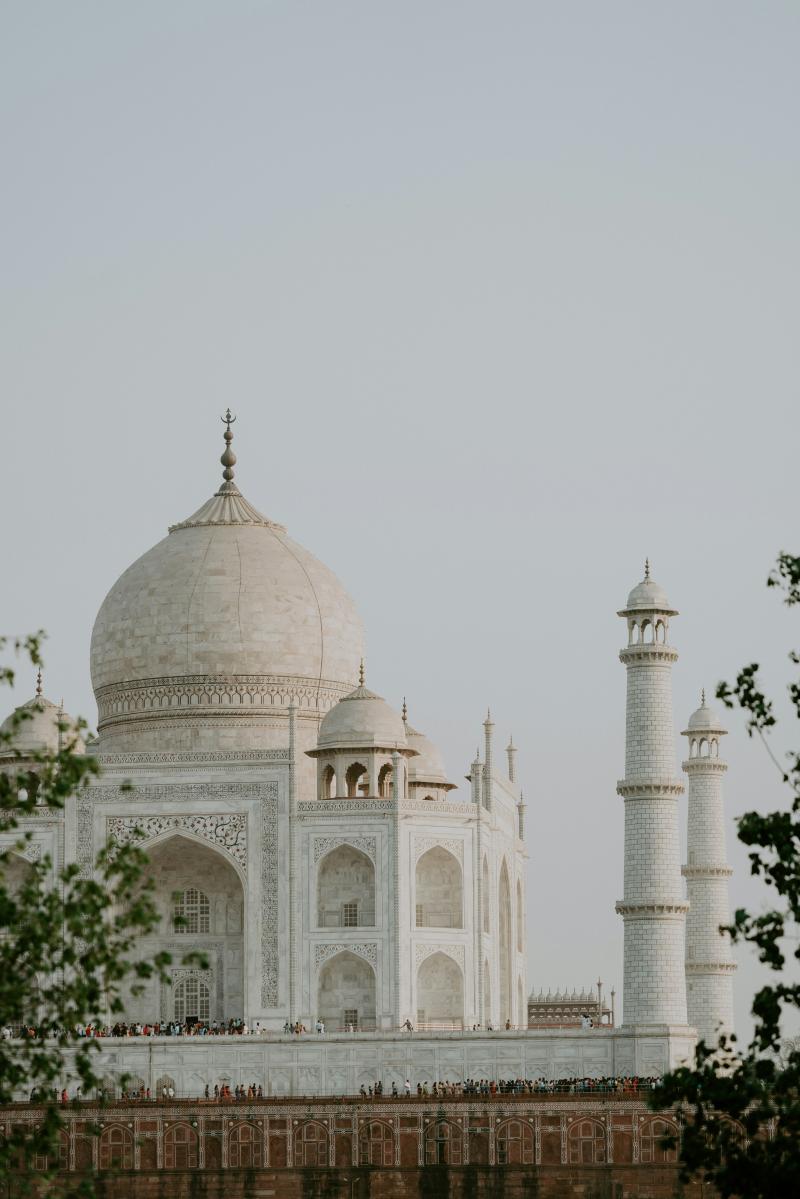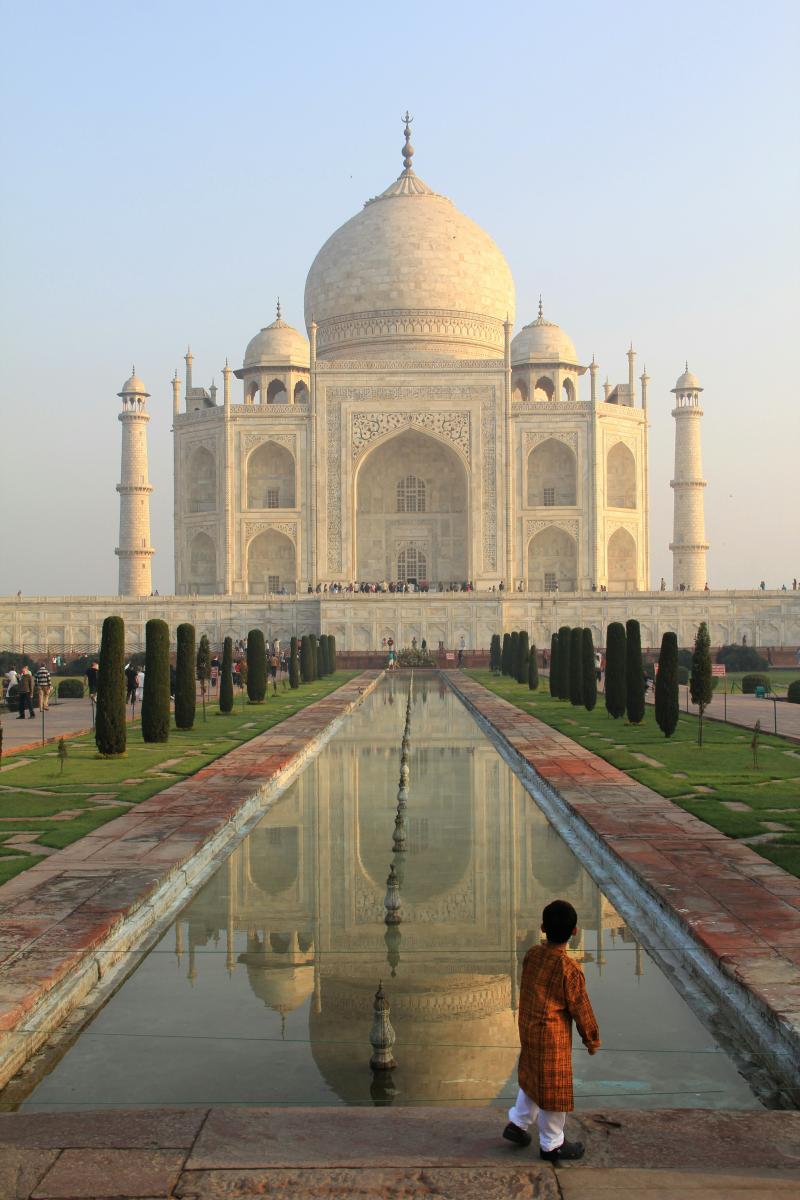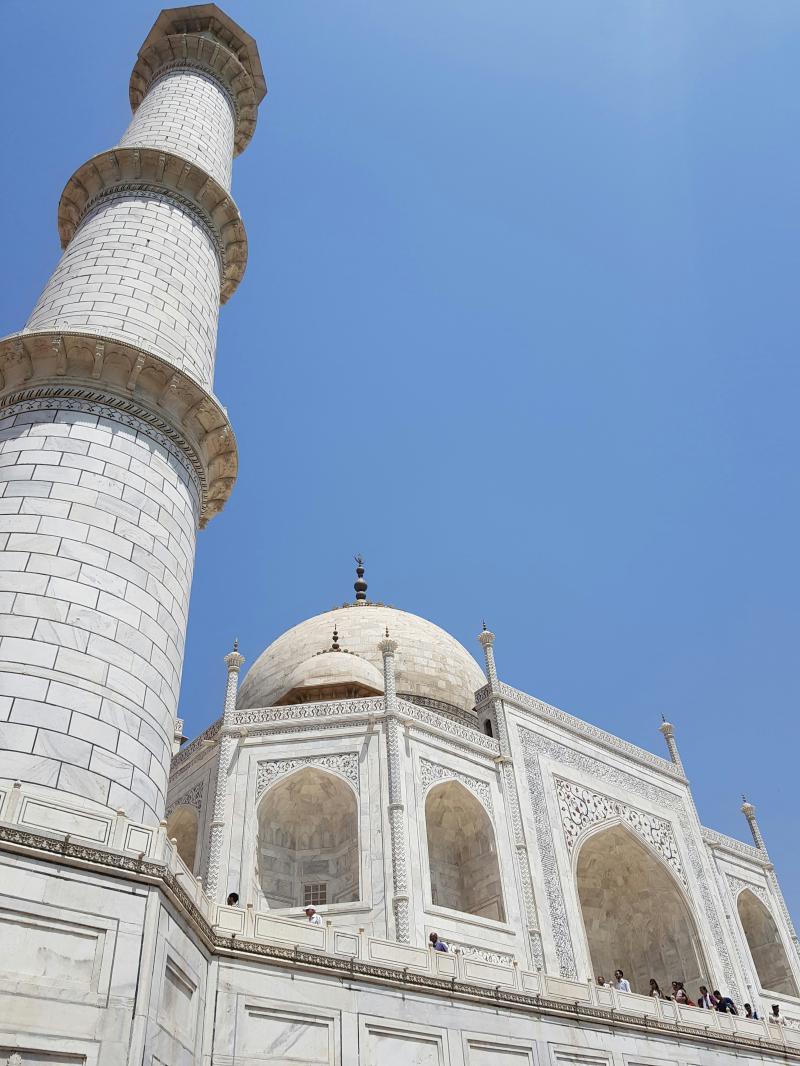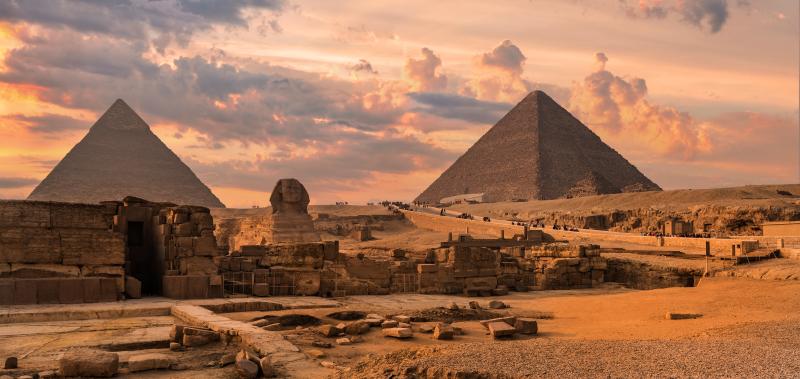View It
Visit It
Taj Mahal
India
Visit Taj Mahal
The Taj Mahal, located in Agra, Uttar Pradesh, stands as a monumental testament to love and architectural grandeur. This iconic symbol of India's rich history is not just a breathtaking sight but also a UNESCO World Heritage Site that attracts millions of visitors from around the globe each year. Built by the Mughal Emperor Shah Jahan in memory of his beloved wife Mumtaz Mahal, the Taj Mahal is celebrated universally as a jewel of Muslim art in India and one of the universally admired masterpieces of the world's heritage.
Visiting the Taj Mahal is like stepping into a page from a fairy tale. The mausoleum is constructed entirely of white marble that seems to change color with the shifting arc of the sun, glowing warmly at dawn, milky white in the afternoon, and golden at sunset. This changing hue, combined with the intricate workmanship of the marble inlays, featuring precious and semi-precious stones, captivates the eye and soothes the spirit. The complex is impeccably maintained, featuring lush gardens, reflective pools, and impressive gateways, which enhance the serene and solemn atmosphere of the site.
A trip to the Taj Mahal is also an immersion into the architectural history of India's Mughal era. The complex includes several other beautiful buildings, including a mosque and a guest house, all of which exemplify the era's style and the skill of its artisans. Visitors are often struck by the perfect symmetry of the structures, the detailed calligraphy encircling the archways, and the overall sense of peace that the site exudes. Whether you're an avid historian, an architecture enthusiast, or simply a lover of beautiful places, the Taj Mahal is a compelling destination that promises a deeply moving and enriching experience.
Taj Mahal Monthly Weather Conditions
LOW
TEMP
HIGH
TEMP
DAYS OF PRECIP.
January
46°F
68°F
5
February
50°F
72°F
5
March
57°F
86°F
5
April
64°F
95°F
5
May
68°F
104°F
5
June
77°F
104°F
7
July
79°F
95°F
10
August
79°F
95°F
7
September
73°F
91°F
7
October
64°F
86°F
5
November
54°F
77°F
5
December
50°F
72°F
2
Need to Know Before You Go To Taj Mahal
Find your Next Adventure in Taj Mahal
Explore Taj Mahal
- Symbol of Love: The Taj Mahal was built by the Mughal Emperor Shah Jahan in memory of his beloved wife Mumtaz Mahal, who died during childbirth. It is considered the ultimate symbol of love.
- Construction Time: The construction of the Taj Mahal began around 1632 and was completed in 1653, taking over 20 years to complete with the help of an estimated 20,000 workers.
- Architectural Style: The Taj Mahal is a masterpiece of Mughal architecture, combining elements from Islamic, Persian, Ottoman Turkish, and Indian architectural styles.
- Changing Colors: The Taj Mahal is known for changing its color depending on the time of day. It can appear to be pinkish in the morning, milky white in the evening, and golden when the moon shines.
- Precious Stones: The white marble of the Taj Mahal is inlaid with 28 different types of precious and semi-precious stones brought from various parts of India and as far away as Tibet and China.
- Calligraphy and Art: The walls of the Taj Mahal are adorned with exquisite calligraphy of Persian poems and intricate floral artworks, which include inlay work using precious stones.
- Optical Illusion: The four minarets surrounding the Taj Mahal were constructed slightly outward from the plinth to create an optical illusion. From afar, they appear straight, but in the event of a collapse (such as an earthquake), they would fall away from the main structure.
- Reflection Pool: The reflecting pool in front of the Taj Mahal was designed to reflect the image of the mausoleum. This feature is a classic example of the use of water in Islamic gardens.
- Protected Site: To protect the Taj Mahal from environmental pollution, no motor vehicles are allowed within 500 meters of the complex. Tourists must either walk from parking areas or catch an electric bus.
- Visitor's Footwear: Visitors are required to cover their shoes with a special shoe cover before entering the Taj Mahal, to protect the marble from wear and tear.
The Taj Mahal not only remains a testament to the artistic and scientific accomplishments of a bygone era but also continues to inspire countless visitors from all over the world.
Featured Picture Gallery

View the Taj Mahal from Afar

Walk Through the Mughal Garden While Visiting the Taj Mahal

Gaze at the White Marble that the Taj Mahal is Made Out Of
Explore Similar Locations
Dubai

Jerusalem

Great Pyramids

